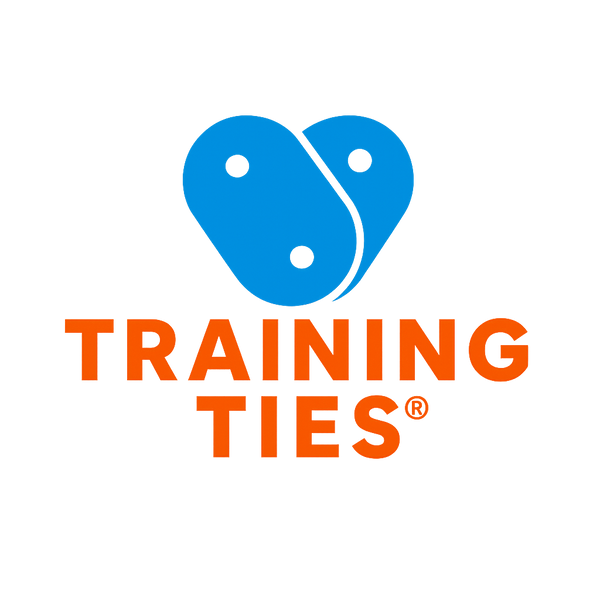
Autism and Shoe Tying- 5 Helpful Strategies
Share
I started my teaching career in Newton Public Schools (just outside Boston, MA) as a teacher’s aide in an elementary school and I was assigned to two boys in the 4th grade with Autism. While both students were often at the top of the class in most subjects, they both struggled with shoe tying. Back then, I tied their shoes for them whenever they asked since that's what other teachers did, but I often wish I’d had the skills and experience I have now and could have helped them LEARN shoe tying.
After almost two decades of being a classroom teacher, PE Teacher, Adapted PE Teacher and Special Education Teacher I've added lots of tools to my teaching toolbox. In particular, several for teaching shoe tying to students with Autism or other special needs that make learning to tie shoes more difficult.
For years in my PE classes I would do a shoe tying unit for Kindergarten and 1st grade students. I didn't subscribe to the idea that teaching shoe tying “wasn't my job" since my job's most important role was to keep students safe, and I couldn't do that if their shoes were untied. What I came to learn is while teaching shoe tying solves major safety concerns, an added bonus was seeing the independence and happiness it brought to those students AND their parents and teachers.
As someone who struggled with shoe tying myself as a child I know how embarrassing it can be to walk around with knotted/untied laces or worse...Velcro! So, I’ve rounded up my best tips for helping to learn shoe tying.
1) Have Your Shoes OFF and Facing Out
A common problem with learning shoe tying is that other factors can get in the way. If a learner struggles with bending over comfortably, it can limit their patience. Removing the shoes and facing them out (as they would be on your feet) allows the learner to be comfortable when learning and the shoes facing out mimic how they'll be tied on the feet.
2) Try Using Two-Colored Laces
When I was a teacher I used to remove my old shoelaces from my sneakers (making sure the laces from each pair were a different color), cut each lace in half, tied one half of each colored lace together, and then re-laced my shoes with the new two-colored laces. The laces being one color on the left and a different color on the right helped the kids in my unit with shoe tying because there are a lot of verbal cues and directions when teaching this skill. It’s much more helpful and less overwhelming for both the teacher and the learner to reference and work with the color of a lace vs attempting to understand directional language. For example, "Take the blue lace and bring it under the red lace" is much easier to follow than "Take that lace and bring it under the other lace". Fortunately, you don't need to cut laces in half anymore if you don’t want to Training Ties just released Two-Color laces! Two-Color Laces

3) Use Adult Sized Shoes First - The Bigger the Better!
Kids shoes are often small and harder to work with for small hands. Adult shoes are bigger and easier to see/maneuver with. I'm 6'2 and wear size 13 shoes so I used to bring in my old basketball sneakers as my learning sneakers for my students. These helped my students learn easier and they thought it was a lot more fun to learn on "huge sneakers". Win-Win!

4) Write Down the Steps in Order
It's often helpful to give learners a simple cheatsheet or guide to follow so that they don't need to have you hanging over their shoulder. Many learners do better without the added pressure of someone on top of them while they learn, especially if that person is repeating steps over and over again which can cause both the teacher and the learner to grow frustrated. I also recommend keeping each direction on any written instructions short and simple with less than 6 or 7 words. "Criss Cross the laces", "Pull the Blue Lace Under the Red" "Pull both laces tight" etc.
5) Training Ties: The Ultimate Shoe Tying Tool
I invented Training Ties to help simplify the learning process of tying shoes, and for keeping shoelaces tied all day. Training Ties help to chunk the learning into small, manageable steps so that if there is a mistake, the learner won't have to start all over again. Like a video game, Training Ties offers learners "checkpoints" where their progress is essentially saved so the learner won't have to pinch and hold the laces as they figure out the next step. They can remove their hands and their work won't be undone. Once the learner has successfully learned how to tie their shoes with Training Ties, they can build confidence and quickly transition to tying on their own without the tool. That being said, an additional feature of Training Ties is that they keep your shoelaces tied ALL DAY. No more bending over multiple times to retie laces that have come undone. So while the learner can and should try their hand at tying without Training Ties once they’ve gotten the hang of it and to solidify the skill, they will likely want to rock their favorite color and continue sporting their Ties. Check out Training Ties here Training Ties®

Hope these help!
Bobby Morong, Founder and CEO of Training Ties®
